Majd Hawasly
Exploring Alignment in Shared Cross-lingual Spaces
May 23, 2024



Abstract:Despite their remarkable ability to capture linguistic nuances across diverse languages, questions persist regarding the degree of alignment between languages in multilingual embeddings. Drawing inspiration from research on high-dimensional representations in neural language models, we employ clustering to uncover latent concepts within multilingual models. Our analysis focuses on quantifying the \textit{alignment} and \textit{overlap} of these concepts across various languages within the latent space. To this end, we introduce two metrics \CA{} and \CO{} aimed at quantifying these aspects, enabling a deeper exploration of multilingual embeddings. Our study encompasses three multilingual models (\texttt{mT5}, \texttt{mBERT}, and \texttt{XLM-R}) and three downstream tasks (Machine Translation, Named Entity Recognition, and Sentiment Analysis). Key findings from our analysis include: i) deeper layers in the network demonstrate increased cross-lingual \textit{alignment} due to the presence of language-agnostic concepts, ii) fine-tuning of the models enhances \textit{alignment} within the latent space, and iii) such task-specific calibration helps in explaining the emergence of zero-shot capabilities in the models.\footnote{The code is available at \url{https://github.com/baselmousi/multilingual-latent-concepts}}
Improving Language Models Trained with Translated Data via Continual Pre-Training and Dictionary Learning Analysis
May 23, 2024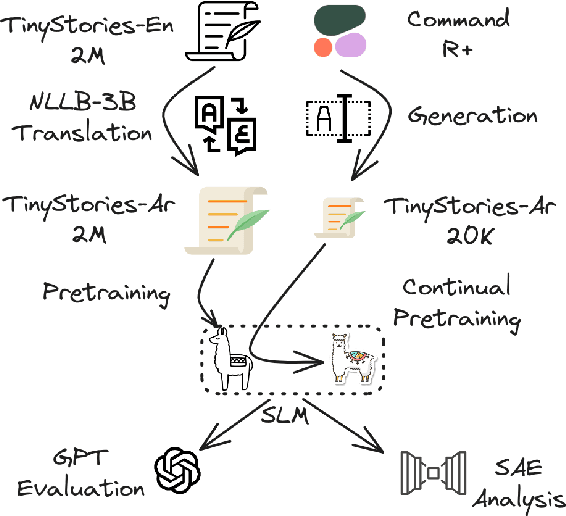
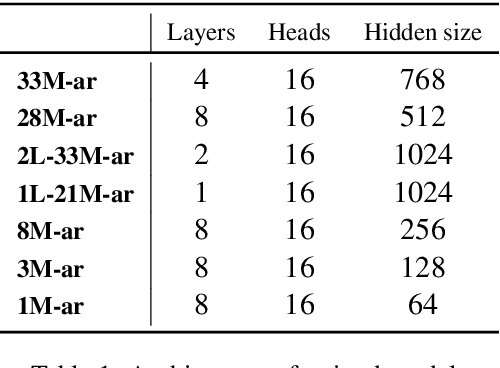
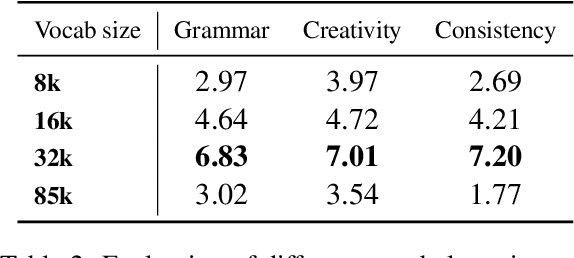
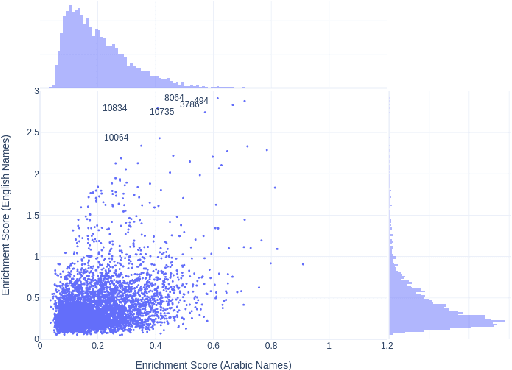
Abstract:Training LLMs in low resources languages usually utilizes data augmentation with machine translation (MT) from English language. However, translation brings a number of challenges: there are large costs attached to translating and curating huge amounts of content with high-end machine translation solutions, the translated content carries over cultural biases, and if the translation is not faithful and accurate, the quality of the data degrades causing issues in the trained model. In this work we investigate the role of translation and synthetic data in training language models. We translate TinyStories, a dataset of 2.2M short stories for 3-4 year old children, from English to Arabic using the free NLLB-3B MT model. We train a number of story generation models of sizes 1M-33M parameters using this data. We identify a number of quality and task-specific issues in the resulting models. To rectify these issues, we further pre-train the models with a small dataset of synthesized high-quality stories, representing 1\% of the original training data, using a capable LLM in Arabic. We show using GPT-4 as a judge and dictionary learning analysis from mechanistic interpretability that the suggested approach is a practical means to resolve some of the translation pitfalls. We illustrate the improvement through case studies of linguistic issues and cultural bias.
Analyzing Multilingual Competency of LLMs in Multi-Turn Instruction Following: A Case Study of Arabic
Oct 23, 2023
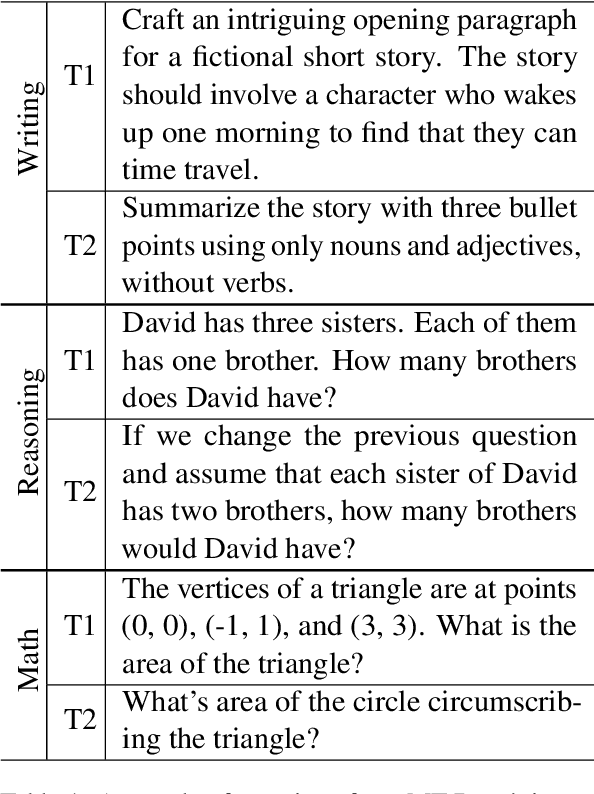
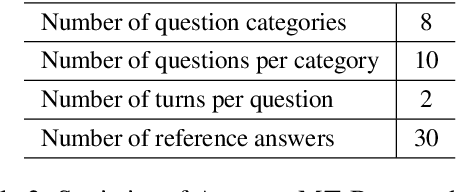

Abstract:While significant progress has been made in benchmarking Large Language Models (LLMs) across various tasks, there is a lack of comprehensive evaluation of their abilities in responding to multi-turn instructions in less-commonly tested languages like Arabic. Our paper offers a detailed examination of the proficiency of open LLMs in such scenarios in Arabic. Utilizing a customized Arabic translation of the MT-Bench benchmark suite, we employ GPT-4 as a uniform evaluator for both English and Arabic queries to assess and compare the performance of the LLMs on various open-ended tasks. Our findings reveal variations in model responses on different task categories, e.g., logic vs. literacy, when instructed in English or Arabic. We find that fine-tuned base models using multilingual and multi-turn datasets could be competitive to models trained from scratch on multilingual data. Finally, we hypothesize that an ensemble of small, open LLMs could perform competitively to proprietary LLMs on the benchmark.
Scaled-up Discovery of Latent Concepts in Deep NLP Models
Aug 20, 2023
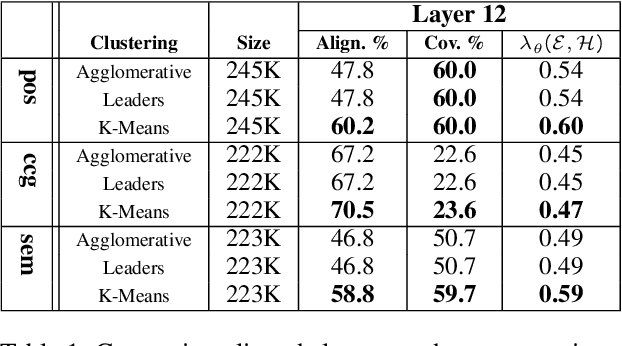


Abstract:Pre-trained language models (pLMs) learn intricate patterns and contextual dependencies via unsupervised learning on vast text data, driving breakthroughs across NLP tasks. Despite these achievements, these models remain black boxes, necessitating research into understanding their decision-making processes. Recent studies explore representation analysis by clustering latent spaces within pre-trained models. However, these approaches are limited in terms of scalability and the scope of interpretation because of high computation costs of clustering algorithms. This study focuses on comparing clustering algorithms for the purpose of scaling encoded concept discovery of representations from pLMs. Specifically, we compare three algorithms in their capacity to unveil the encoded concepts through their alignment to human-defined ontologies: Agglomerative Hierarchical Clustering, Leaders Algorithm, and K-Means Clustering. Our results show that K-Means has the potential to scale to very large datasets, allowing rich latent concept discovery, both on the word and phrase level.
LLMeBench: A Flexible Framework for Accelerating LLMs Benchmarking
Aug 09, 2023


Abstract:The recent development and success of Large Language Models (LLMs) necessitate an evaluation of their performance across diverse NLP tasks in different languages. Although several frameworks have been developed and made publicly available, their customization capabilities for specific tasks and datasets are often complex for different users. In this study, we introduce the LLMeBench framework. Initially developed to evaluate Arabic NLP tasks using OpenAI's GPT and BLOOM models; it can be seamlessly customized for any NLP task and model, regardless of language. The framework also features zero- and few-shot learning settings. A new custom dataset can be added in less than 10 minutes, and users can use their own model API keys to evaluate the task at hand. The developed framework has been already tested on 31 unique NLP tasks using 53 publicly available datasets within 90 experimental setups, involving approximately 296K data points. We plan to open-source the framework for the community (https://github.com/qcri/LLMeBench/). A video demonstrating the framework is available online (https://youtu.be/FkQn4UjYA0s).
Benchmarking Arabic AI with Large Language Models
May 24, 2023Abstract:With large Foundation Models (FMs), language technologies (AI in general) are entering a new paradigm: eliminating the need for developing large-scale task-specific datasets and supporting a variety of tasks through set-ups ranging from zero-shot to few-shot learning. However, understanding FMs capabilities requires a systematic benchmarking effort by comparing FMs performance with the state-of-the-art (SOTA) task-specific models. With that goal, past work focused on the English language and included a few efforts with multiple languages. Our study contributes to ongoing research by evaluating FMs performance for standard Arabic NLP and Speech processing, including a range of tasks from sequence tagging to content classification across diverse domains. We start with zero-shot learning using GPT-3.5-turbo, Whisper, and USM, addressing 33 unique tasks using 59 publicly available datasets resulting in 96 test setups. For a few tasks, FMs performs on par or exceeds the performance of the SOTA models but for the majority it under-performs. Given the importance of prompt for the FMs performance, we discuss our prompt strategies in detail and elaborate on our findings. Our future work on Arabic AI will explore few-shot prompting, expand the range of tasks, and investigate additional open-source models.
DiPA: Diverse and Probabilistically Accurate Interactive Prediction
Oct 12, 2022
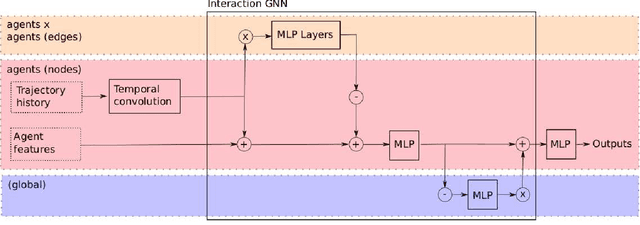

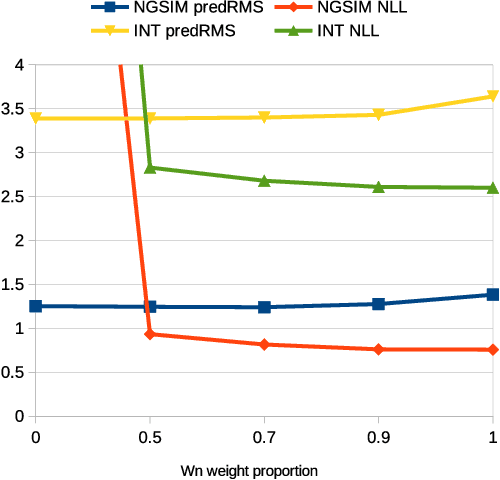
Abstract:Accurate prediction is important for operating an autonomous vehicle in interactive scenarios. Previous interactive predictors have used closest-mode evaluations, which test if one of a set of predictions covers the ground-truth, but not if additional unlikely predictions are made. The presence of unlikely predictions can interfere with planning, by indicating conflict with the ego plan when it is not likely to occur. Closest-mode evaluations are not sufficient for showing a predictor is useful, an effective predictor also needs to accurately estimate mode probabilities, and to be evaluated using probabilistic measures. These two evaluation approaches, eg. predicted-mode RMS and minADE/FDE, are analogous to precision and recall in binary classification, and there is a challenging trade-off between prediction strategies for each. We present DiPA, a method for producing diverse predictions while also capturing accurate probabilistic estimates. DiPA uses a flexible representation that captures interactions in widely varying road topologies, and uses a novel training regime for a Gaussian Mixture Model that supports diversity of predicted modes, along with accurate spatial distribution and mode probability estimates. DiPA achieves state-of-the-art performance on INTERACTION and NGSIM, and improves over a baseline (MFP) when both closest-mode and probabilistic evaluations are used at the same time.
Perspectives on the System-level Design of a Safe Autonomous Driving Stack
Jul 29, 2022
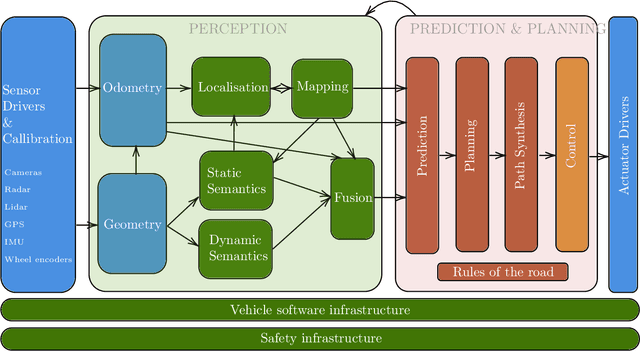
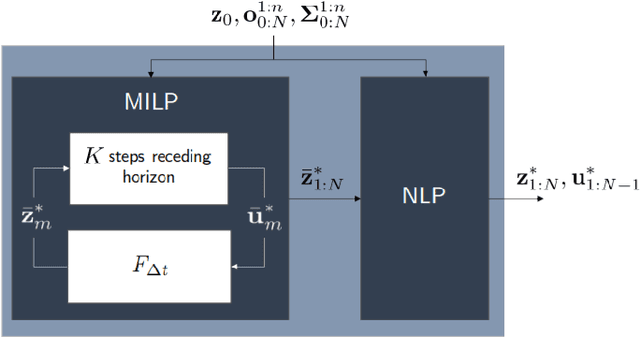
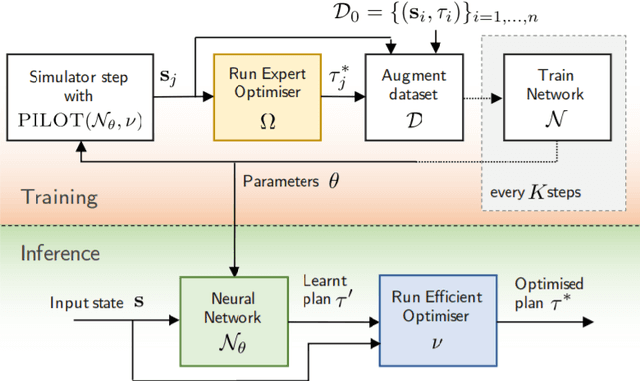
Abstract:Achieving safe and robust autonomy is the key bottleneck on the path towards broader adoption of autonomous vehicles technology. This motivates going beyond extrinsic metrics such as miles between disengagement, and calls for approaches that embody safety by design. In this paper, we address some aspects of this challenge, with emphasis on issues of motion planning and prediction. We do this through description of novel approaches taken to solving selected sub-problems within an autonomous driving stack, in the process introducing the design philosophy being adopted within Five. This includes safe-by-design planning, interpretable as well as verifiable prediction, and modelling of perception errors to enable effective sim-to-real and real-to-sim transfer within the testing pipeline of a realistic autonomous system.
Beyond RMSE: Do machine-learned models of road user interaction produce human-like behavior?
Jun 22, 2022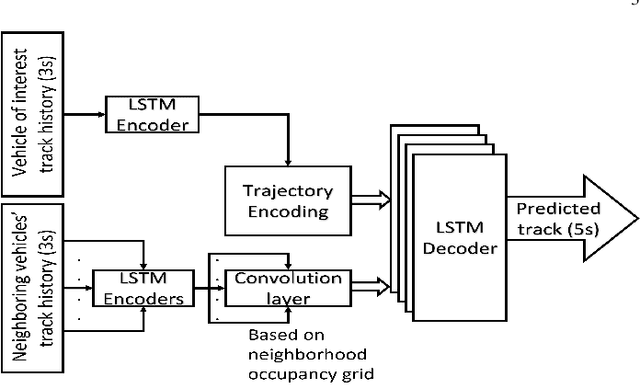
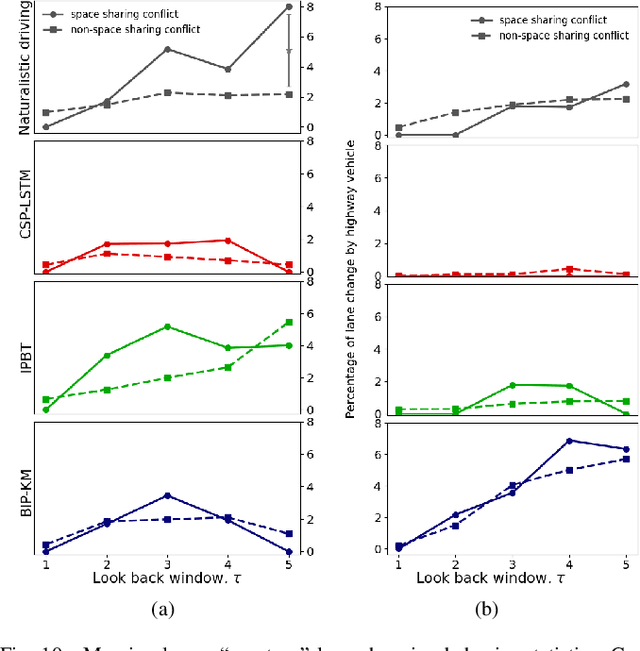
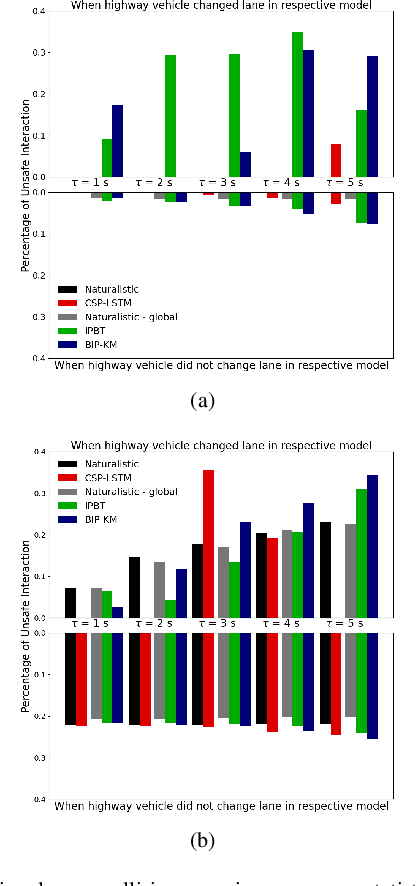
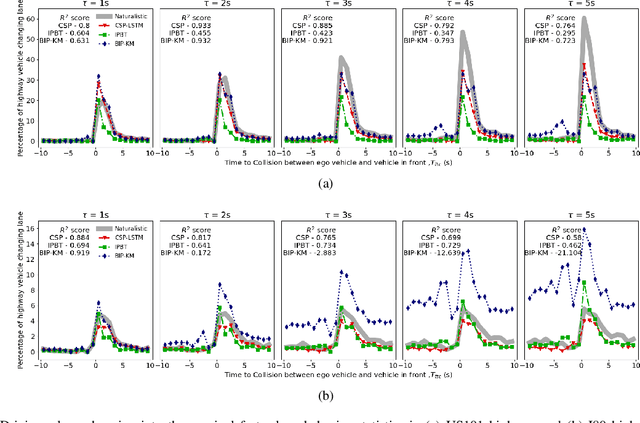
Abstract:Autonomous vehicles use a variety of sensors and machine-learned models to predict the behavior of surrounding road users. Most of the machine-learned models in the literature focus on quantitative error metrics like the root mean square error (RMSE) to learn and report their models' capabilities. This focus on quantitative error metrics tends to ignore the more important behavioral aspect of the models, raising the question of whether these models really predict human-like behavior. Thus, we propose to analyze the output of machine-learned models much like we would analyze human data in conventional behavioral research. We introduce quantitative metrics to demonstrate presence of three different behavioral phenomena in a naturalistic highway driving dataset: 1) The kinematics-dependence of who passes a merging point first 2) Lane change by an on-highway vehicle to accommodate an on-ramp vehicle 3) Lane changes by vehicles on the highway to avoid lead vehicle conflicts. Then, we analyze the behavior of three machine-learned models using the same metrics. Even though the models' RMSE value differed, all the models captured the kinematic-dependent merging behavior but struggled at varying degrees to capture the more nuanced courtesy lane change and highway lane change behavior. Additionally, the collision aversion analysis during lane changes showed that the models struggled to capture the physical aspect of human driving: leaving adequate gap between the vehicles. Thus, our analysis highlighted the inadequacy of simple quantitative metrics and the need to take a broader behavioral perspective when analyzing machine-learned models of human driving predictions.
PILOT: Efficient Planning by Imitation Learning and Optimisation for Safe Autonomous Driving
Nov 01, 2020



Abstract:Achieving the right balance between planning quality, safety and runtime efficiency is a major challenge for autonomous driving research. Optimisation-based planners are typically capable of producing high-quality, safe plans, but at the cost of efficiency. We present PILOT, a two-stage planning framework comprising an imitation neural network and an efficient optimisation component that guarantees the satisfaction of requirements of safety and comfort. The neural network is trained to imitate an expensive-to-run optimisation-based planning system with the same objective as the efficient optimisation component of PILOT. We demonstrate in simulated autonomous driving experiments that the proposed framework achieves a significant reduction in runtime when compared to the optimisation-based expert it imitates, without sacrificing the planning quality.
 Add to Chrome
Add to Chrome Add to Firefox
Add to Firefox Add to Edge
Add to Edge